#open innovation
Explore tagged Tumblr posts
Text
Innovation : le Fonds Amgen France pour la science et l’humain lance son 4e appel à projets
Innovation : le Fonds Amgen France pour la science et l’humain lance son 4e appel à projets
Suite au succès des précédents appels à projets, le Fonds Amgen France pour la Science et l’Humain lance une quatrième édition, dotée de 600 000 € sur le thème « de la médecine de précision à l’optimisation du parcours de soins pour une expérience patient améliorée ». Présentation. Le Fonds Amgen France créé en 2019 dans le cadre du programme Amgen Innovations affiche son engagement à faire…

View On WordPress
#AMGEN#Amgen Innovations#digital pharma#e-santé#esanté#Innovation onco-hématologie#onco-hématologie#oncologie#Open Innovation#Santé connectée
0 notes
Text
Socks, food, and the ocean—they all have one thing in common: microplastics.
To tackle the microplastic pollution problem, researchers and policy experts from the Aquarium and @mbari-blog created an open-source library dedicated to helping researchers trace these tiny culprits back to their source. Check out the webcomic below to learn more!


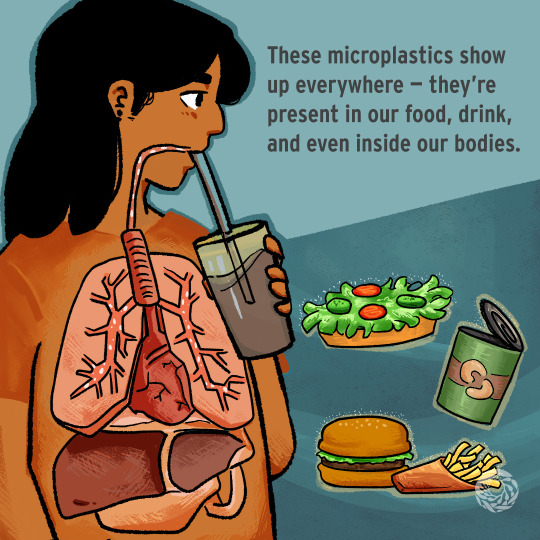


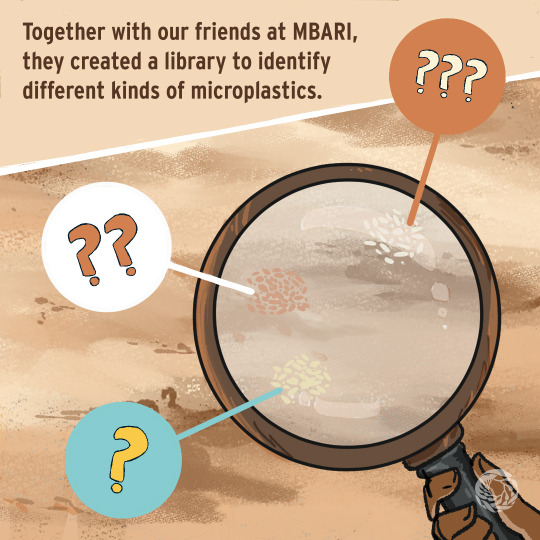
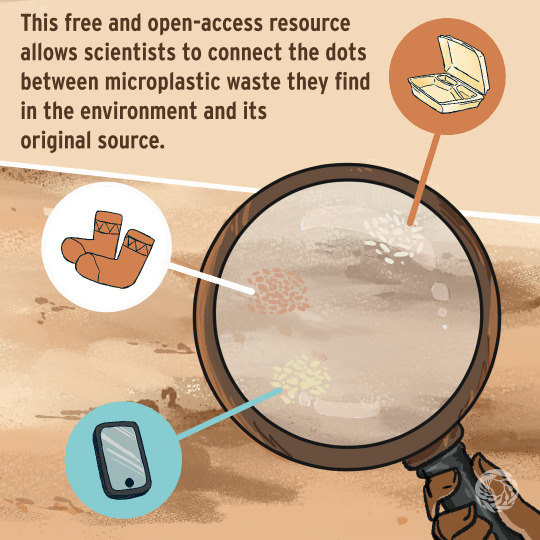


You can read more about the library on our website. Together we can take down plastic pollution! 💙🌍
#monterey bay aquarium#open source innovation sensation#journey to the solution to plastic pollution
4K notes
·
View notes
Text
Cleantech has an enshittification problem
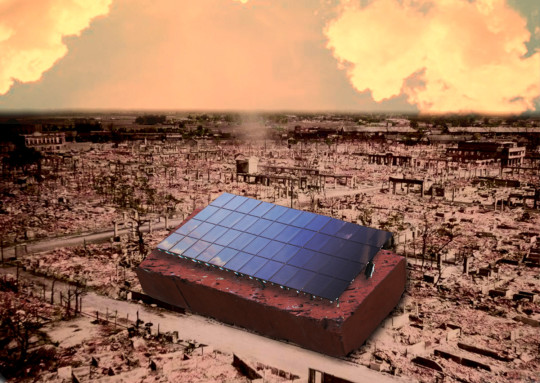
On July 14, I'm giving the closing keynote for the fifteenth HACKERS ON PLANET EARTH, in QUEENS, NY. Happy Bastille Day! On July 20, I'm appearing in CHICAGO at Exile in Bookville.

EVs won't save the planet. Ultimately, the material bill for billions of individual vehicles and the unavoidable geometry of more cars-more traffic-more roads-greater distances-more cars dictate that the future of our cities and planet requires public transit – lots of it.
But no matter how much public transit we install, there's always going to be some personal vehicles on the road, and not just bikes, ebikes and scooters. Between deliveries, accessibility, and stubbornly low-density regions, there's going to be a lot of cars, vans and trucks on the road for the foreseeable future, and these should be electric.
Beyond that irreducible minimum of personal vehicles, there's the fact that individuals can't install their own public transit system; in places that lack the political will or means to create working transit, EVs are a way for people to significantly reduce their personal emissions.
In policy circles, EV adoption is treated as a logistical and financial issue, so governments have focused on making EVs affordable and increasing the density of charging stations. As an EV owner, I can affirm that affordability and logistics were important concerns when we were shopping for a car.
But there's a third EV problem that is almost entirely off policy radar: enshittification.
An EV is a rolling computer in a fancy case with a squishy person inside of it. While this can sound scary, there are lots of cool implications for this. For example, your EV could download your local power company's tariff schedule and preferentially charge itself when the rates are lowest; they could also coordinate with the utility to reduce charging when loads are peaking. You can start them with your phone. Your repair technician can run extensive remote diagnostics on them and help you solve many problems from the road. New features can be delivered over the air.
That's just for starters, but there's so much more in the future. After all, the signal virtue of a digital computer is its flexibility. The only computer we know how to make is the Turing complete, universal, Von Neumann machine, which can run every valid program. If a feature is computationally tractable – from automated parallel parking to advanced collision prevention – it can run on a car.
The problem is that this digital flexibility presents a moral hazard to EV manufacturers. EVs are designed to make any kind of unauthorized, owner-selected modification into an IP rights violation ("IP" in this case is "any law that lets me control the conduct of my customers or competitors"):
https://locusmag.com/2020/09/cory-doctorow-ip/
EVs are also designed so that the manufacturer can unilaterally exert control over them or alter their operation. EVs – even more than conventional vehicles – are designed to be remotely killswitched in order to help manufacturers and dealers pressure people into paying their car notes on time:
https://pluralistic.net/2023/07/24/rent-to-pwn/#kitt-is-a-demon
Manufacturers can reach into your car and change how much of your battery you can access:
https://pluralistic.net/2023/07/28/edison-not-tesla/#demon-haunted-world
They can lock your car and have it send its location to a repo man, then greet him by blinking its lights, honking its horn, and pulling out of its parking space:
https://tiremeetsroad.com/2021/03/18/tesla-allegedly-remotely-unlocks-model-3-owners-car-uses-smart-summon-to-help-repo-agent/
And of course, they can detect when you've asked independent mechanic to service your car and then punish you by degrading its functionality:
https://www.repairerdrivennews.com/2024/06/26/two-of-eight-claims-in-tesla-anti-trust-lawsuit-will-move-forward/
This is "twiddling" – unilaterally and irreversibly altering the functionality of a product or service, secure in the knowledge that IP law will prevent anyone from twiddling back by restoring the gadget to a preferred configuration:
https://pluralistic.net/2023/02/19/twiddler/
The thing is, for an EV, twiddling is the best case scenario. As bad as it is for the company that made your EV to change how it works whenever they feel like picking your pocket, that's infinitely preferable to the manufacturer going bankrupt and bricking your car.
That's what just happened to owners of Fisker EVs, cars that cost $40-70k. Cars are long-term purchases. An EV should last 12-20 years, or even longer if you pay to swap the battery pack. Fisker was founded in 2016 and shipped its first Ocean SUV in 2023. The company is now bankrupt:
https://insideevs.com/news/723669/fisker-inc-bankruptcy-chapter-11-official/
Fisker called its vehicles "software-based cars" and they weren't kidding. Without continuous software updates and server access, those Fisker Ocean SUVs are turning into bricks. What's more, the company designed the car from the ground up to make any kind of independent service and support into a felony, by wrapping the whole thing in overlapping layers of IP. That means that no one can step in with a module that jailbreaks the Fisker and drops in an alternative firmware that will keep the fleet rolling.
This is the third EV risk – not just finance, not just charger infrastructure, but the possibility that any whizzy, cool new EV company will go bust and brick your $70k cleantech investment, irreversibly transforming your car into 5,500 lb worth of e-waste.
This confers a huge advantage onto the big automakers like VW, Kia, Ford, etc. Tesla gets a pass, too, because it achieved critical mass before people started to wise up to the risk of twiddling and bricking. If you're making a serious investment in a product you expect to use for 20 years, are you really gonna buy it from a two-year old startup with six months' capital in the bank?
The incumbency advantage here means that the big automakers won't have any reason to sink a lot of money into R&D, because they won't have to worry about hungry startups with cool new ideas eating their lunches. They can maintain the cozy cartel that has seen cars stagnate for decades, with the majority of "innovation" taking the form of shitty, extractive and ill-starred ideas like touchscreen controls and an accelerator pedal that you have to rent by the month:
https://www.theverge.com/2022/11/23/23474969/mercedes-car-subscription-faster-acceleration-feature-price
Put that way, it's clear that this isn't an EV problem, it's a cleantech problem. Cleantech has all the problems of EVs: it requires a large capital expenditure, it will be "smart," and it is expected to last for decades. That's rooftop solar, heat-pumps, smart thermostat sensor arrays, and home storage batteries.
And just as with EVs, policymakers have focused on infrastructure and affordability without paying any attention to the enshittification risks. Your rooftop solar will likely be controlled via a Solaredge box – a terrible technology that stops working if it can't reach the internet for a protracted period (that's right, your home solar stops working if the grid fails!).
I found this out the hard way during the covid lockdowns, when Solaredge terminated its 3G cellular contract and notified me that I would have to replace the modem in my system or it would stop working. This was at the height of the supply-chain crisis and there was a long waiting list for any replacement modems, with wifi cards (that used your home internet rather than a cellular connection) completely sold out for most of a year.
There are good reasons to connect rooftop solar arrays to the internet – it's not just so that Solaredge can enshittify my service. Solar arrays that coordinate with the grid can make it much easier and safer to manage a grid that was designed for centralized power production and is being retrofitted for distributed generation, one roof at a time.
But when the imperatives of extraction and efficiency go to war, extraction always wins. After all, the Solaredge system is already in place and solar installers are largely ignorant of, and indifferent to, the reasons that a homeowner might want to directly control and monitor their system via local controls that don't roundtrip through the cloud.
Somewhere in the hindbrain of any prospective solar purchaser is the experience with bricked and enshittified "smart" gadgets, and the knowledge that anything they buy from a cool startup with lots of great ideas for improving production, monitoring, and/or costs poses the risk of having your 20 year investment bricked after just a few years – and, thanks to the extractive imperative, no one will be able to step in and restore your ex-solar array to good working order.
I make the majority of my living from books, which means that my pay is very "lumpy" – I get large sums when I publish a book and very little in between. For many years, I've used these payments to make big purchases, rather than financing them over long periods where I can't predict my income. We've used my book payments to put in solar, then an induction stove, then a battery. We used one to buy out the lease on our EV. And just a month ago, we used the money from my upcoming Enshittification book to put in a heat pump (with enough left over to pay for a pair of long-overdue cataract surgeries, scheduled for the fall).
When we started shopping for heat pumps, it was clear that this was a very exciting sector. First of all, heat pumps are kind of magic, so efficient and effective it's almost surreal. But beyond the basic tech – which has been around since the late 1940s – there is a vast ferment of cool digital features coming from exciting and innovative startups.
By nature, I'm the kid of person who likes these digital features. I started out as a computer programmer, and while I haven't written production code since the previous millennium, I've been in and around the tech industry for my whole adult life. But when it came time to buy a heat-pump – an investment that I expected to last for 20 years or more – there was no way I was going to buy one of these cool new digitally enhanced pumps, no matter how much the reviewers loved them. Sure, they'd work well, but it's precisely because I'm so knowledgeable about high tech that I could see that they would fail very, very badly.
You may think EVs are bullshit, and they are – though there will always be room for some personal vehicles, and it's better for people in transit deserts to drive EVs than gas-guzzlers. You may think rooftop solar is a dead-end and be all-in on utility scale solar (I think we need both, especially given the grid-disrupting extreme climate events on our horizon). But there's still a wide range of cleantech – induction tops, heat pumps, smart thermostats – that are capital intensive, have a long duty cycle, and have good reasons to be digitized and networked.
Take home storage batteries: your utility can push its rate card to your battery every time they change their prices, and your battery can use that information to decide when to let your house tap into the grid, and when to switch over to powering your home with the solar you've stored up during the day. This is a very old and proven pattern in tech: the old Fidonet BBS network used a version of this, with each BBS timing its calls to other nodes to coincide with the cheapest long-distance rates, so that messages for distant systems could be passed on:
https://en.wikipedia.org/wiki/FidoNet
Cleantech is a very dynamic sector, even if its triumphs are largely unheralded. There's a quiet revolution underway in generation, storage and transmission of renewable power, and a complimentary revolution in power-consumption in vehicles and homes:
https://pluralistic.net/2024/06/12/s-curve/#anything-that-cant-go-on-forever-eventually-stops
But cleantech is too important to leave to the incumbents, who are addicted to enshittification and planned obsolescence. These giant, financialized firms lack the discipline and culture to make products that have the features – and cost savings – to make them appealing to the very wide range of buyers who must transition as soon as possible, for the sake of the very planet.
It's not enough for our policymakers to focus on financing and infrastructure barriers to cleantech adoption. We also need a policy-level response to enshittification.
Ideally, every cleantech device would be designed so that it was impossible to enshittify – which would also make it impossible to brick:
Based on free software (best), or with source code escrowed with a trustee who must release the code if the company enters administration (distant second-best);
All patents in a royalty-free patent-pool (best); or in a trust that will release them into a royalty-free pool if the company enters administration (distant second-best);
No parts-pairing or other DRM permitted (best); or with parts-pairing utilities available to all parties on a reasonable and non-discriminatory basis (distant second-best);
All diagnostic and error codes in the public domain, with all codes in the clear within the device (best); or with decoding utilities available on demand to all comers on a reasonable and non-discriminatory basis (distant second-best).
There's an obvious business objection to this: it will reduce investment in innovative cleantech because investors will perceive these restrictions as limits on the expected profits of their portfolio companies. It's true: these measures are designed to prevent rent-extraction and other enshittificatory practices by cleantech companies, and to the extent that investors are counting on enshittification rents, this might prevent them from investing.
But that has to be balanced against the way that a general prohibition on enshittificatory practices will inspire consumer confidence in innovative and novel cleantech products, because buyers will know that their investments will be protected over the whole expected lifespan of the product, even if the startup goes bust (nearly every startup goes bust). These measures mean that a company with a cool product will have a much larger customer-base to sell to. Those additional sales more than offset the loss of expected revenue from cheating and screwing your customers by twiddling them to death.
There's also an obvious legal objection to this: creating these policies will require a huge amount of action from Congress and the executive branch, a whole whack of new rules and laws to make them happen, and each will attract court-challenges.
That's also true, though it shouldn't stop us from trying to get legal reforms. As a matter of public policy, it's terrible and fucked up that companies can enshittify the things we buy and leave us with no remedy.
However, we don't have to wait for legal reform to make this work. We can take a shortcut with procurement – the things governments buy with public money. The feds, the states and localities buy a lot of cleantech: for public facilities, for public housing, for public use. Prudent public policy dictates that governments should refuse to buy any tech unless it is designed to be enshittification-resistant.
This is an old and honorable tradition in policymaking. Lincoln insisted that the rifles he bought for the Union Army come with interoperable tooling and ammo, for obvious reasons. No one wants to be the Commander in Chief who shows up on the battlefield and says, "Sorry, boys, war's postponed, our sole supplier decided to stop making ammunition."
By creating a market for enshittification-proof cleantech, governments can ensure that the public always has the option of buying an EV that can't be bricked even if the maker goes bust, a heat-pump whose digital features can be replaced or maintained by a third party of your choosing, a solar controller that coordinates with the grid in ways that serve their owners – not the manufacturers' shareholders.
We're going to have to change a lot to survive the coming years. Sure, there's a lot of scary ways that things can go wrong, but there's plenty about our world that should change, and plenty of ways those changes could be for the better. It's not enough for policymakers to focus on ensuring that we can afford to buy whatever badly thought-through, extractive tech the biggest companies want to foist on us – we also need a focus on making cleantech fit for purpose, truly smart, reliable and resilient.

Support me this summer on the Clarion Write-A-Thon and help raise money for the Clarion Science Fiction and Fantasy Writers' Workshop!

If you'd like an essay-formatted version of this post to read or share, here's a link to it on pluralistic.net, my surveillance-free, ad-free, tracker-free blog:
https://pluralistic.net/2024/06/26/unplanned-obsolescence/#better-micetraps

Image: 臺灣古寫真上色 (modified) https://commons.wikimedia.org/wiki/File:Raid_on_Kagi_City_1945.jpg
Grendelkhan (modified) https://commons.wikimedia.org/wiki/File:Ground_mounted_solar_panels.gk.jpg
CC BY-SA 4.0 https://creativecommons.org/licenses/by-sa/4.0/deed.en
#pluralistic#procurement#cleantech#evs#solar#solarpunk#policy#copyfight#copyright#felony contempt of business model#floss#free software#open source#oss#dmca 1201#interoperability#adversarial interoperability#solarization#electrification#enshittification#innovation#incumbency#climate#climate emergency
431 notes
·
View notes
Text
I was not expecting Odysseus to make a friggin’ Aeolus-powered jetpack
#short kings in stem
#epic the musical#the vengance saga#odysseus#posideon#bag of winds#the dude is innovative I’ll give you that#and then the Naruto move he pulled during the Vengeance Saga stream#i was gobsmacked#lmao#meme material fr#I enjoyed it#it was pretty fun#very funny#Hermes said not to open the bag#then Odysseus opens the bag#i was laughing so hard
31 notes
·
View notes
Text
Open starter!


He would have thought he was dead, but dead things don't feel pain.
And he was feeling... quite a lot of it. The sensation was familiar by this point, the progression of only feeling hurt, to feeling a body that hurts. From being the concept of hurt, to merely experiencing it.
Still, both concepts and the transition between them were nothing short of agonizing.
Yi wanted nothing more than to go back to whatever dream he was having before, something about his sister. He wanted nothing more than to go back to being dead.
Still, the pain persisted.
Eventually he regained enough conciousness to realize he was laying somewhere, with a warm cloth overing his eyes. He had half a mind to lift it, but something kept him from doing so. Something told him to pretend to still be in that dream.Perhaps survival instincts, though anyone who would have taken steps to take care of him like this surely wouldn't be out to harm him...
His ears flick forward at the sound of someone approaching.He forces them to relax, going limp. Best to gather information before engaging this individual...

9 notes
·
View notes
Text
honestly, I feel like Dave McKean's work elevated Neil Gaiman way more than the other way around and we don't distribute credit for that properly. I truly don't think--and, critically, never have thought--the early Sandman writing was so good that it would have gotten far without the heavy hitting art lending it such an air of respectability. McKean's work is so visually distinct still, let alone 20 years ago, let alone 30. "This is serious art for serious stories for serious people," those mixed media paintings say when they're surrounded by pen and ink put out on a brutal schedule. "I am a serious person with sophisticated tastes," the buyer says, given permission to be pretentious and smug as hell, which is very alluring to many people.
#and given that perky goth girl Death was designed by Mike Dringenberg--like. c'mon now y'all. how much did Neil really innovate?#i mean i say this partially from a place of envy deep down i'm sure#i would love for a serious artist to come along and solve all my design and presentation problems#if you're out there: i will love you and cherish you bb and also pay you on time i promise#btw this is not “a person is knocked off their pedestal therefore we retcon their art as mediocre”#this is “i have been a hater since 2005 and only now feel I can open my big mouth about it”#what happened in 2005? Anansi Boys.#OooOoohh look at me i'm a British man who thinks I understand African and diaspora and Caribbean myth as well as I do Germanic and Norse#my partially Caribbean ass who grew up w Anansi stories for complicated diaspora reasons (via my nanny): what the fuck is this??? WHAT?
27 notes
·
View notes
Text
stealing some ideas from one of my WIPs for another story, and I gotta say, it is so much fun to make my favorite female characters Worse
#she's an innovative leader open to new ideas#not my fault the new ideas are Worse#(it is. it is my fault)
7 notes
·
View notes
Text
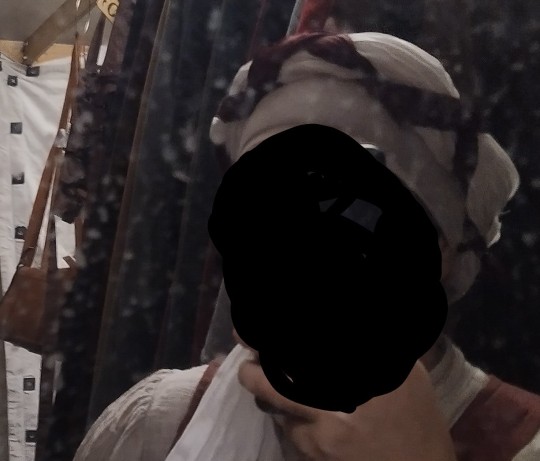
Creating new Steuchlein trends in the year of our lord 2025
#No matter how long something has been out of fashion you can always innovate#no but this has genuinely opened my eyes to how this style is done
4 notes
·
View notes
Text
lovely to know that you can be going through hell in your personal life and your dad can just call you and take you to depths below hell you never even knew existed
#I literally don't live at home anymore so why is everyone still ruining my lifeeeee#I drank an energy drink for the first time in my life and danced to glorilla in my room to lift myself out of the funk idk if it worked#for the dm... whoever said the worst he could do is say no was so wrong#the worst he could do is just like never open it... literally still unread I am sad and embarrasseddddd#I should've just spoken to him in person this has been the worst week of my life!#and my parents find ways to make it worse they're so innovative I wish I inherited that instead of everything else!#I hope ur all doing well I love u all so much always no matter what<33333333333333333333333333333333333333333333333333333333333333333333333
5 notes
·
View notes
Note
I don't mean to be a bother with an ask like this, but do you have an idea of when your commissions may be open again?
I was planning to wait until July was over since I'll be taking that time off for artfight and visiting friends for my birthday :D so August most likely for those who are interested ✌️
#talkin pasm#commission info#opening comms is probably more work than actually doing them at this point LOL#concocting new and innovative ways ao everyone can get a chance at getting one if they want one...
14 notes
·
View notes
Text
i think if you introduced Sunday to punk music, he'd get physically sick
#🎤 chorus ((ooc))#i think he's a music snob#he likes music that is harmonious and follows established patterns and rules#he can appreciate someone playing with said rules to create something new and innovative#but a lot of punk music is about purposefully breaking those rules and often tries to sound disharmonious on purpose#it's also a raw and open expression of emotion and we know how much Sunday hates that (for himself at least)
3 notes
·
View notes
Text
What is DeepSeek and the $6 Million Side Project - Causing a Stir in the AI Industry
DeepSeek AI and the $6 Million Side Project That’s Causing a Stir in the Industry
So lets talk about DeepSeek. I couldn’t believe it was developed on just $6 million. In a world where AI projects routinely burn through hundreds of millions, here was this “side project” that was outperforming tech giants like ChatGPT and Gemini. A David and Goliath story? For movie fun it kind of reminds for of this scene from Tron Legacy, when Flynn dumped the ENCOM OS online for…
#$6 million AI project#AI innovation#artificial intelligence#ChatGPT competitor#China AI technology#cost-efficient AI#DeepSeek AI#Gemini competitor#Mixture-of-Experts system#open-source AI#Stargate infrastructure project
3 notes
·
View notes
Text
Maybe I’ve come to love 90s Star Trek so much recently because seeing humans who forget money and banks even used to be a thing is soooooo satisfying it’s like a warm bath
#testing a room full of trek fans by asking ‘why do you think shit is so much better on earth in trek era’#and if they say ‘tech innovation’ I drop them through a trapdoor#Jesse it’s the social progress. Jesse open the door it’s not AI or replicators it’s humanity!
7 notes
·
View notes
Text
Bay Leaf
Associations:
Open Mindedness
Learning
Manifestation
Innovation
Learning
Self Awareness
Protection
Cleansing
Divination
Properties:
Anti Inflammatory
Antibacterial
Respiratory Aid
Digestive Aid
Stress Reducer
Heart Health
Correspondences:
Sun
Cancer
Solar Plexus, Third Eye
Yellow, Green
Feminine
#bay leaf#herb#open mindedness#manifestation#innovation#learning#self awareness#protection#cleansing#divination#anti inflammatory#antibacterial#respiratory aid#digestive aid#stress reducer#heart health#sun#cancer#solar plexus#third eye#green#yellow#feminine
24 notes
·
View notes
Text
theres a post going around like "if you think slow burn fanfic is unrealistic, just wait till you hear about my real life, where i met someone on a tour and we spent all our time together and cuddled and went out for picnics and talked for hours while staring into each other's eyes and then never said ANYTHING or even HELD HANDS........... for TWO WHOLE WEEKS!!!!" (... "then after a month he sent me a letter saying he'd been in love with me the whole time.")
and like. i'm sorry. two weeks? two weeks is your example of 'an astonishing and ridiculous length of time for two people with an intense emotional connection to spend knowing each other without admitting romantic feelings?' two weeks? two weeks.
#depending on how you want to define your terms i was silently romantically obsessed & doing all that with 🌸 for between 1.5 and 3 YEARS#it would be deeply inappropriate to respond to that person's post with ''get good''. but my god#box opener#i mean my own experience aside i cannot even imagine trying to confess love to someone i'd only known for two weeks#not because i couldnt develop an intense crush in that time. but like. my god. not even REMOTELY enough time to consider your angles#determine whether it's a good idea long- or even short-term#contemplate the rammys#etc.#even if god came to me the moment we met and GUARANTEED the person would return my feelings id still want more than two weeks#just to evaluate#my god. life is varied#normally people complain about things labeled 'slow burn' being inappropriately short in reader time#but this person has introduced the concept of wildly inappropriate slow burn in terms of in-universe time. innovations
27 notes
·
View notes
Text
every single time i listen to great comet i get SO UPSET that it didn't win best musical
#imagine being a judge for the tonys and judging an innovative beautiful show with the best opening number ever in it#and fucking DUST AND ASHES#and saying 'actually the fucking PASEK AND PAUL radio friendly pop musical is better because it has lighting design or whatever'#THEY ADAPTED A PORTION OF WAR AND PEACE INTO A COGENT BEAUTIFUL STORY AND THAT'S NOT CONSIDERED AN AMAZING ACHIEVEMENT???#dear dear evan hansen im never gonna forgive your ass
2 notes
·
View notes